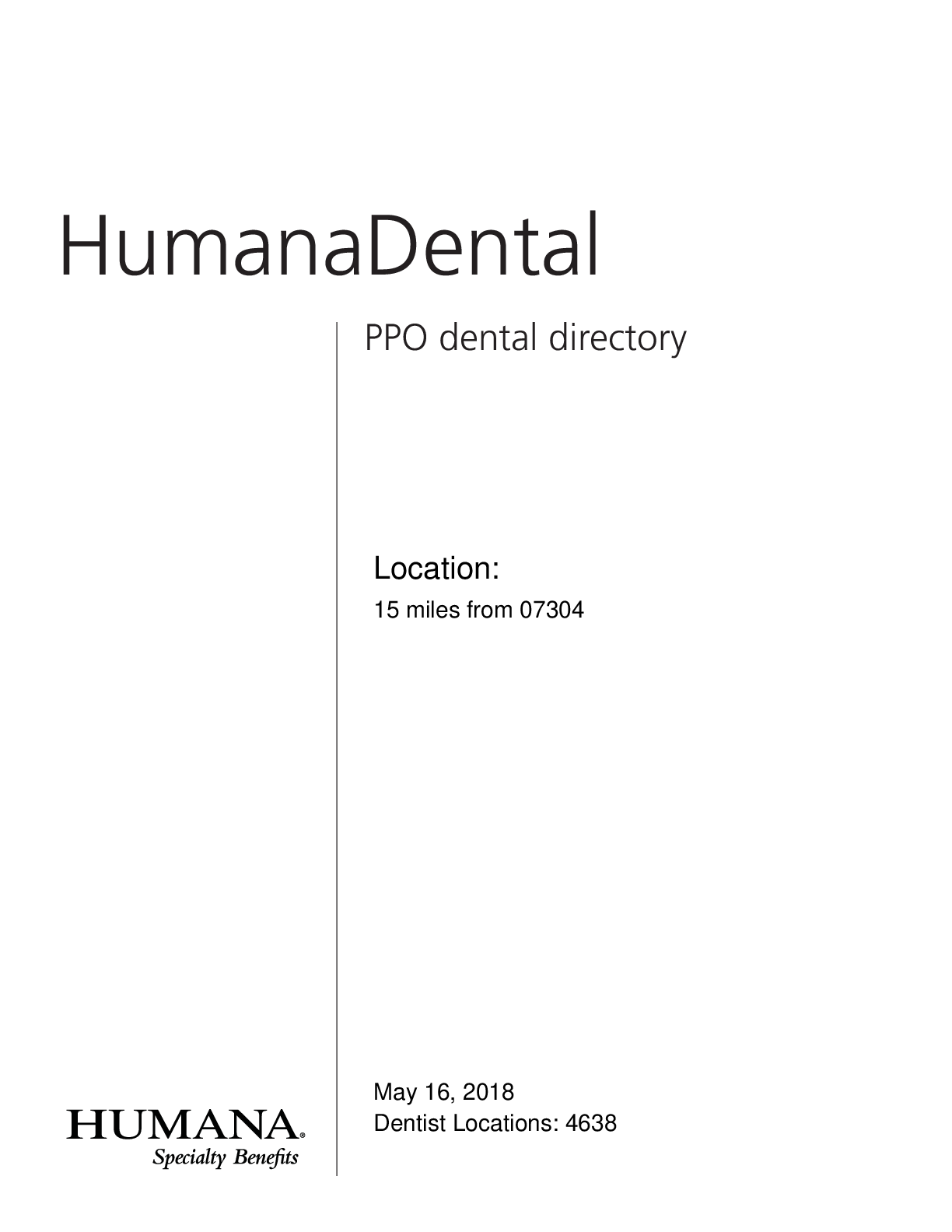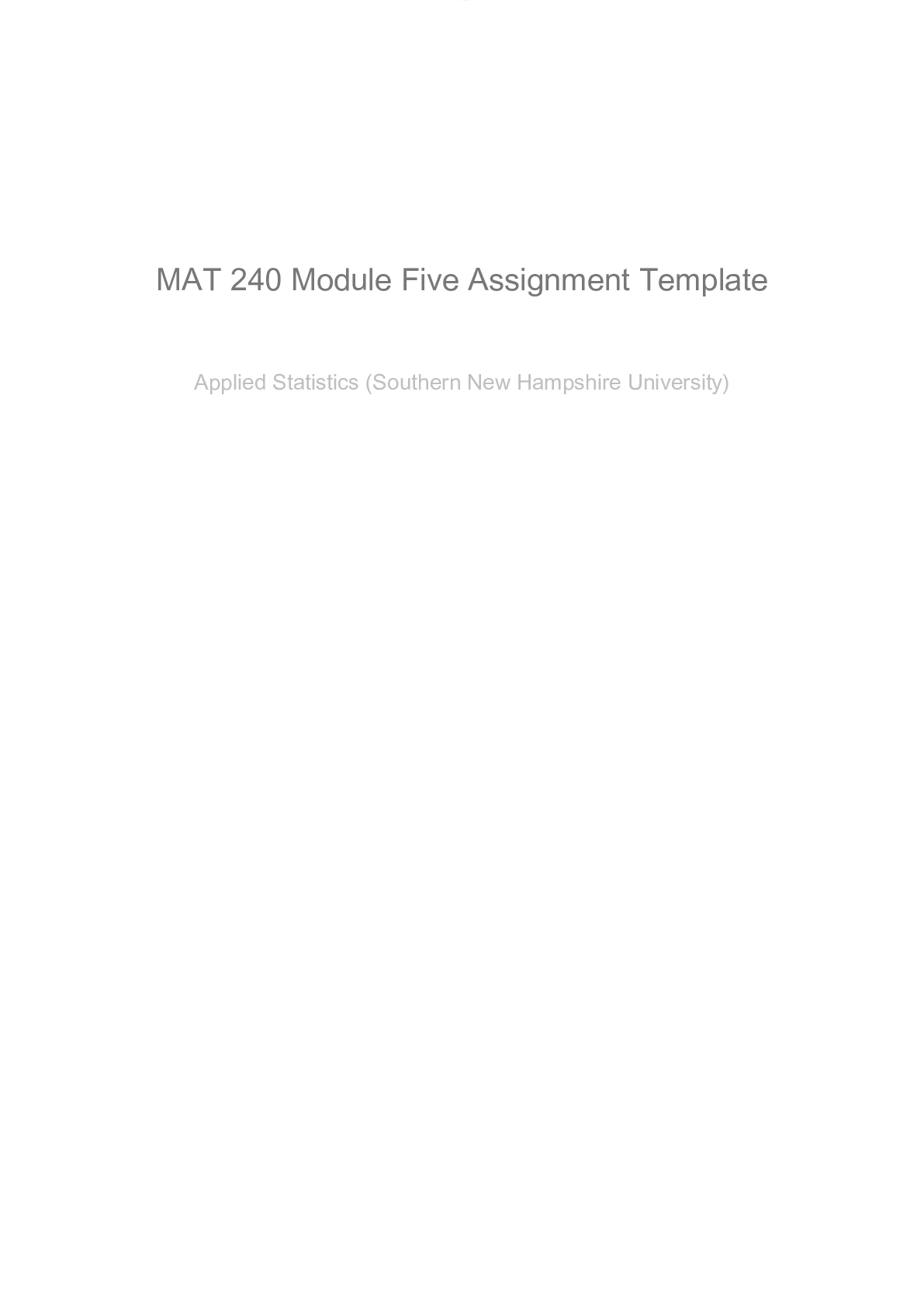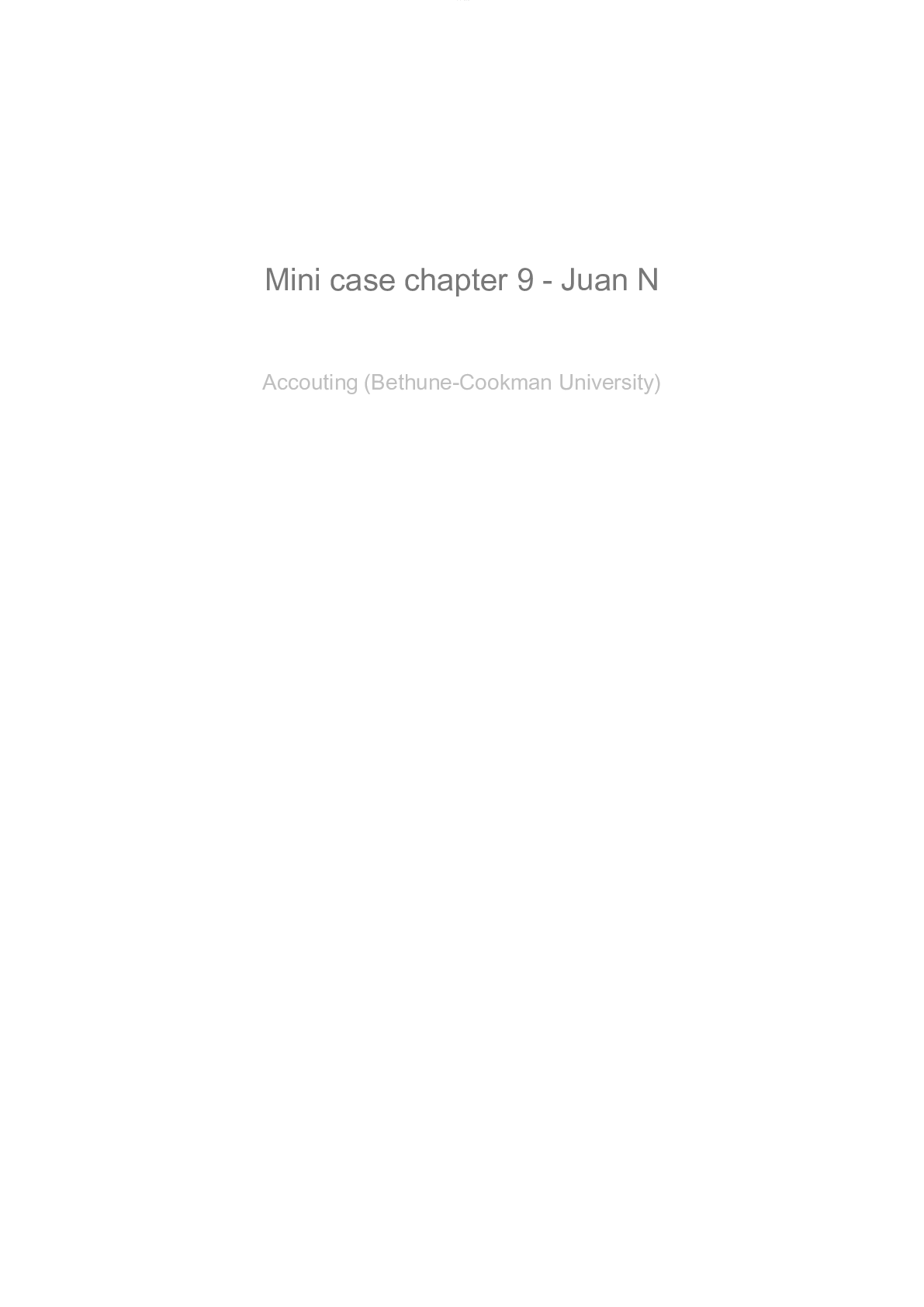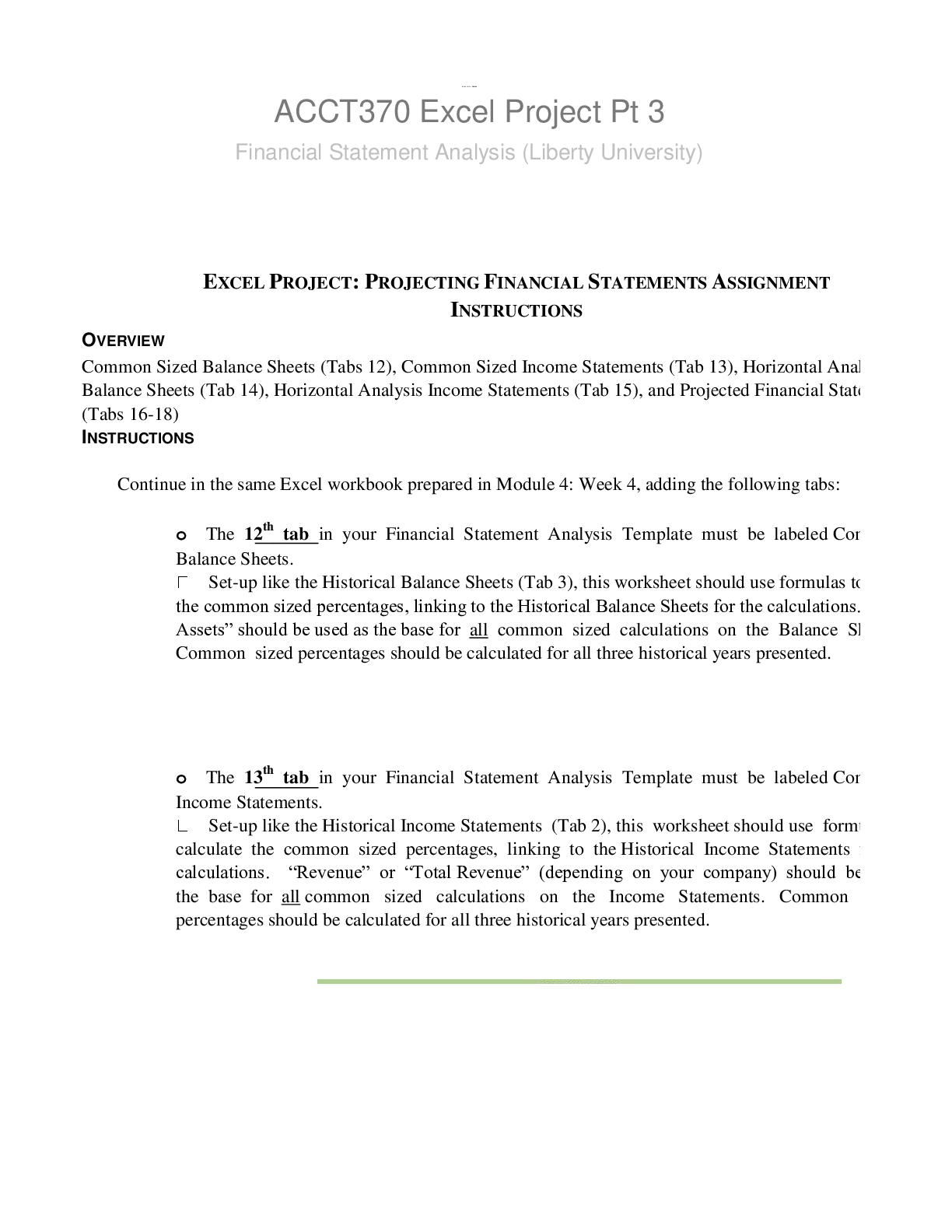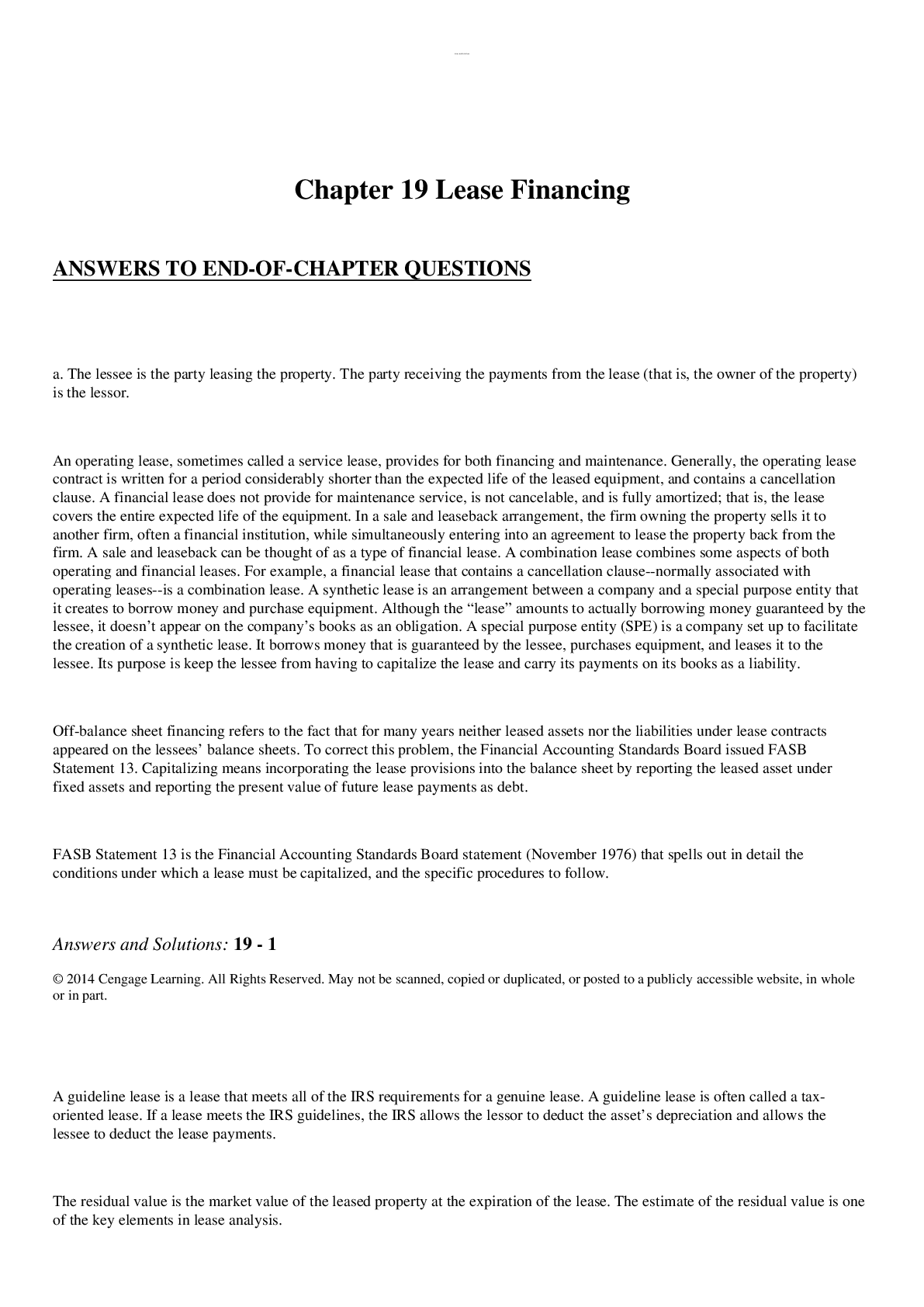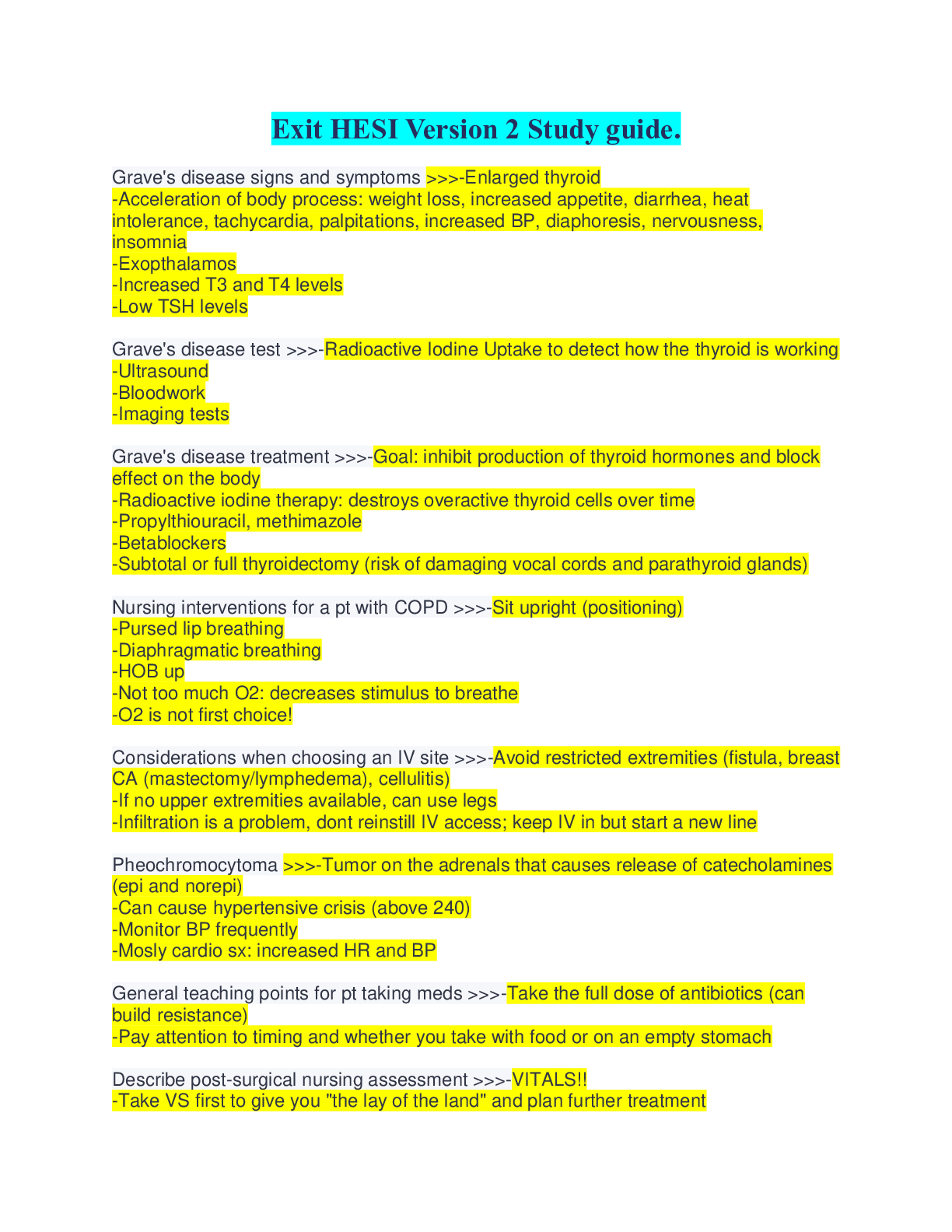BioChemistry > Solutions Guide > Biochemistry Note-Taking Guide (All)
Biochemistry Note-Taking Guide
Document Content and Description Below
**Read This First** - This Note-Taking Guide is meant to be used as you go through each of the Units in Biochemistry. It is only effective when used with course materials, including all of the Essent... ial Reading material in Campbell Biology (�), the course videos (�) and podcasts (�), the Learning Check questions, and the Unit Quizzes. We highly recommend that you print out this guide and use it to make your own notes on the course by writing the vocabulary definitions and answering the questions in your own words. We also recommend that you review your notes every day for all Units to keep the course material fresh in your mind even as you learn new material in the course. If there are definitions or questions you are unable to answer on your own, please click here to discover multiple options for working with a Course Instructor. We would love to help you succeed in Biochemistry! {{click here if you’d like a PDF version}} ***Unit 2: Amino Acids, Peptide Bonds, and Protein Structure*** Page Section Vocabulary Key Questions - You should be able to answer these upon completion of the Unit/Section. Please add your own notes as necessary. 12 Amino Acids, Peptide Bonds, and Protein Structure Proteins are all constructed from the same set of 20 amino acids, linked in unbranched polymers. The bond between amino acids is called a peptide bond, so a polymer of amino acids is called a polypeptide. A protein is a biologically functional molecule made up of one or more polypeptides, each folded and coiled into a specific three-dimensional structure. 13 2.1 Amino Acids: The Building Blocks of Proteins 14 � � Subtopic: Chemical Elements, Atoms, and Bonds—Optional Review Electrons Energy Covalent bonds Biochemistry Note-Taking Guide Biochemistry Note-Taking Guide page 2 Ionic bonds Hydrogen bonds 15 � � Subtopic: Amino Acid Structure and Chemical Properties Amino Carboxyl Hydrophobic Hydrophilic Disulfide bonds Zwitterions - What is the basic structure of an amino acid? List the 4 groups and describe what they look like. An amino acid is an organic molecule with both an amino group and a carboxyl group. At the center of the amino acid is an asymmetric carbon atom called the alpha carbon. The R group, also called the side chain, differs with each amino acid - How do you identify the 3 different types of side chains: non-polar/hydrophobic, polar, and charged? Hydrophobic has C atom and is not charged (found in protein interior) Polar has S, N, or O atom and is not charged (found in protein exterior) Charged are positively or negatively charged (found in protein exterior) - What kind of bonds do each of the 3 different types of side chains make? Hydrophobic have Hydrophobic bonds (weakest kind of bonds) Polar have Disulfide (S-strongest kind of bonds) or Hydrogen (N, O) bonds Charged have Ionic bonds 17 2.2 Levels of Protein Structure To become functional proteins, polymers of amino acids (polypeptides) must fold and take on a particular shape. Primary – backbone of peptide chain formed by peptide bonds during dehydration reaction Secondary – backbone atoms of peptide chain connected by hydrogen bonds forming Alpha helix or Beta sheets Tertiary – R group interactions via: hydrophobic interactions (weakest), hydrogen bonds, ionic bonds or disulfide bonds (strongest) Quaternary – R group interactions (like above), but with other polypeptide chains 18 � � Subtopic: Polypeptides and Functional Proteins Polypeptides Peptide bonds When two amino acids are positioned so that the carboxyl group of one is adjacent to the amino group of the other, they can become joined by a dehydration reaction, with the removal of a water molecule. The resulting covalent bond is called a peptide Biochemistry Note-Taking Guide page 3 bond. This happens during the formation of primary structure in the peptide chain. 19 � � Subtopic: Levels of Protein Structure Dehydration Hydrolysis Alpha helix Beta sheet Denaturation - Protein Folding: What are the 4 levels of protein structure? List distinguishing features of each. - What bonds make up each level of protein structure and how are they formed? Primary – peptide bonds (a type of strong covalent bond) between monomer amino acids Secondary – hydrogen bonds between polypeptide backbone Tertiary – bonds between R groups (hydrogen/ionic/disulfide bonds, hydrophobic/van der Wals interactions) Quaternary – same as tertiary, but between different polypeptide chains 20 � � Subtopic: A Protein's Structure Depends on Its Environment Aggregation - What environmental change breaks each type of bond? Heat – 2nd,3rd,4th protein structure and its bonds pH – hydrogen and ionic bonds (2nd, 3rd and 4th structure) chemicals – hydrogen bonds (2nd, 3rd and 4th structure) enzymes – peptide bonds (1st structure) - What type of amino acid side chain leads to protein aggregation???? Hydrophobic acids tend to aggregate better then hydrophilic Proteins that denature, tend to aggregate. These aggregated clumps can’t be broken down and will continue to accumulate until disease occurs 22 � � 2.3 Protein Function and Disease - How do environmental changes affect protein folding? Reducing agent – disulfide bonds pH change – Ionic, hydrogen bonds Salt – Ionic, hydrogen bonds Heat – hydrophobic interactions How do mutations affect protein structure? [Show More]
Last updated: 1 year ago
Preview 1 out of 26 pages
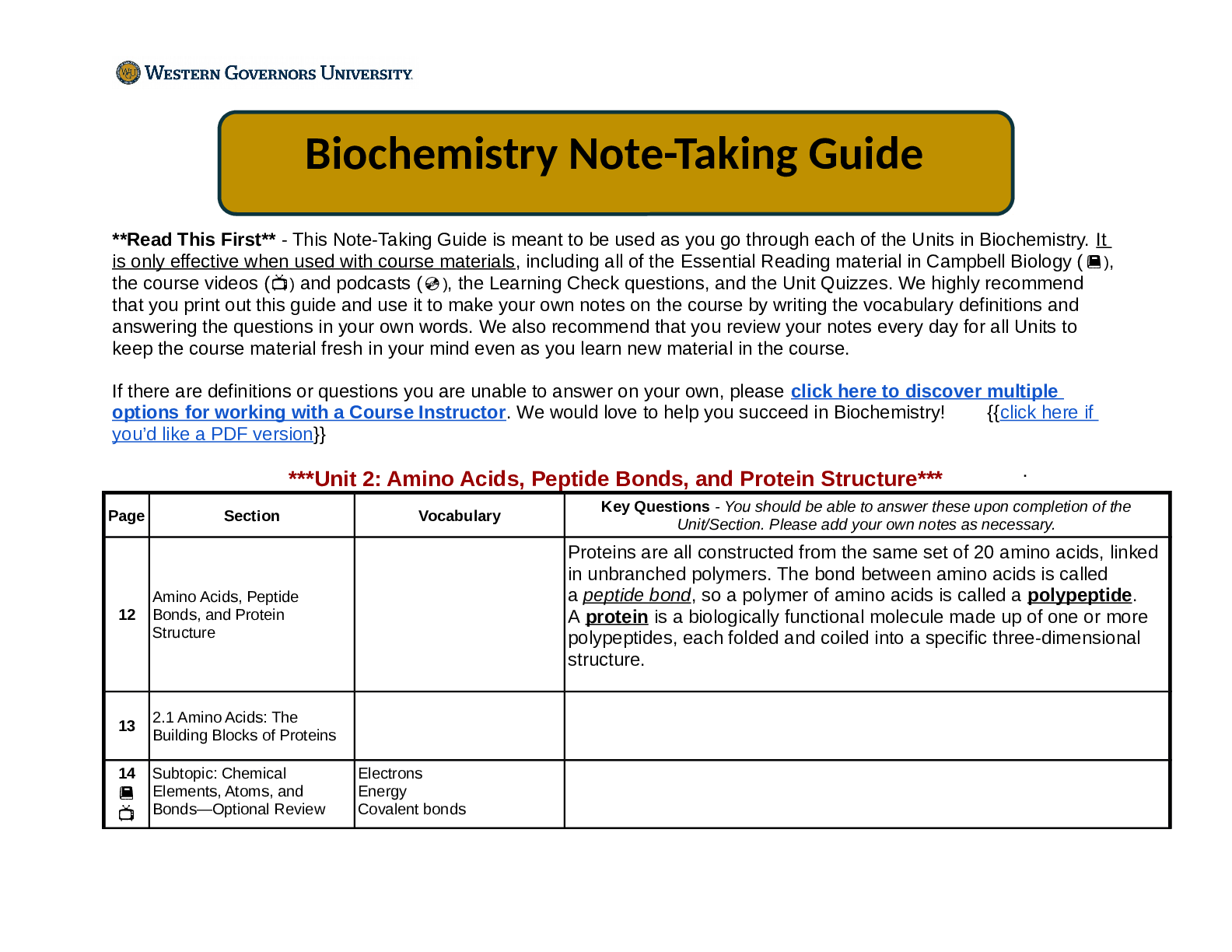
Reviews( 0 )
Document information
Connected school, study & course
About the document
Uploaded On
Jun 08, 2021
Number of pages
26
Written in
Additional information
This document has been written for:
Uploaded
Jun 08, 2021
Downloads
0
Views
32

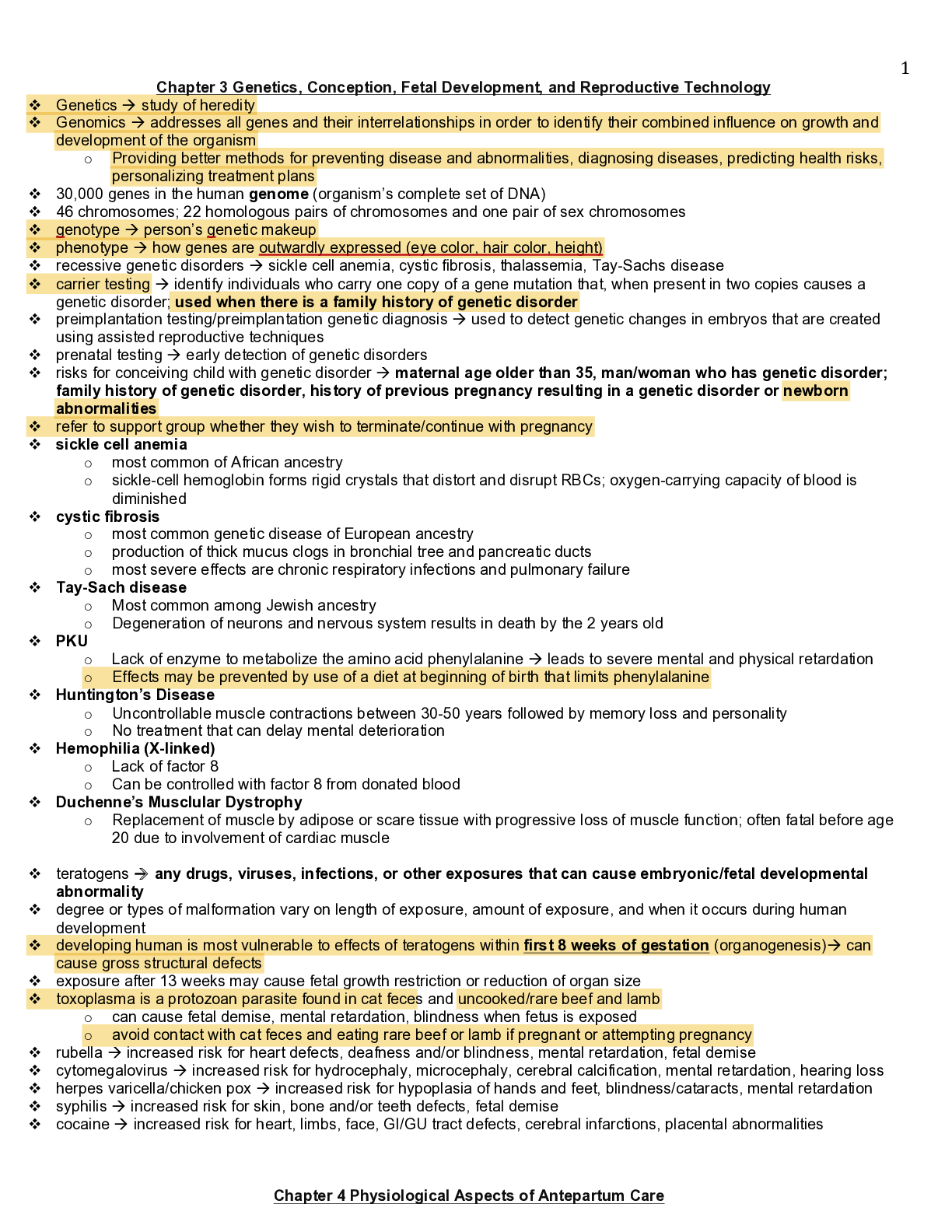
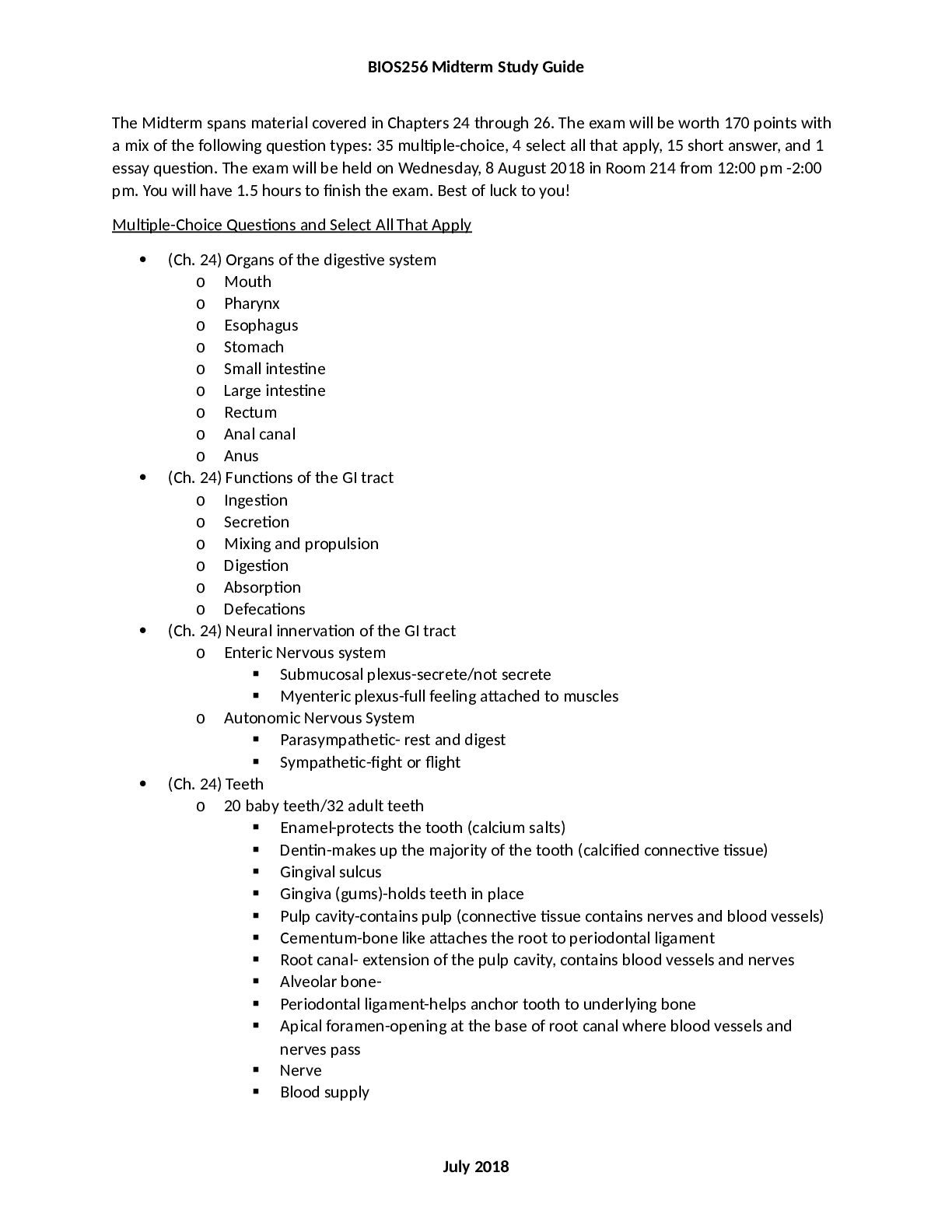
.png)
.png)
.png)
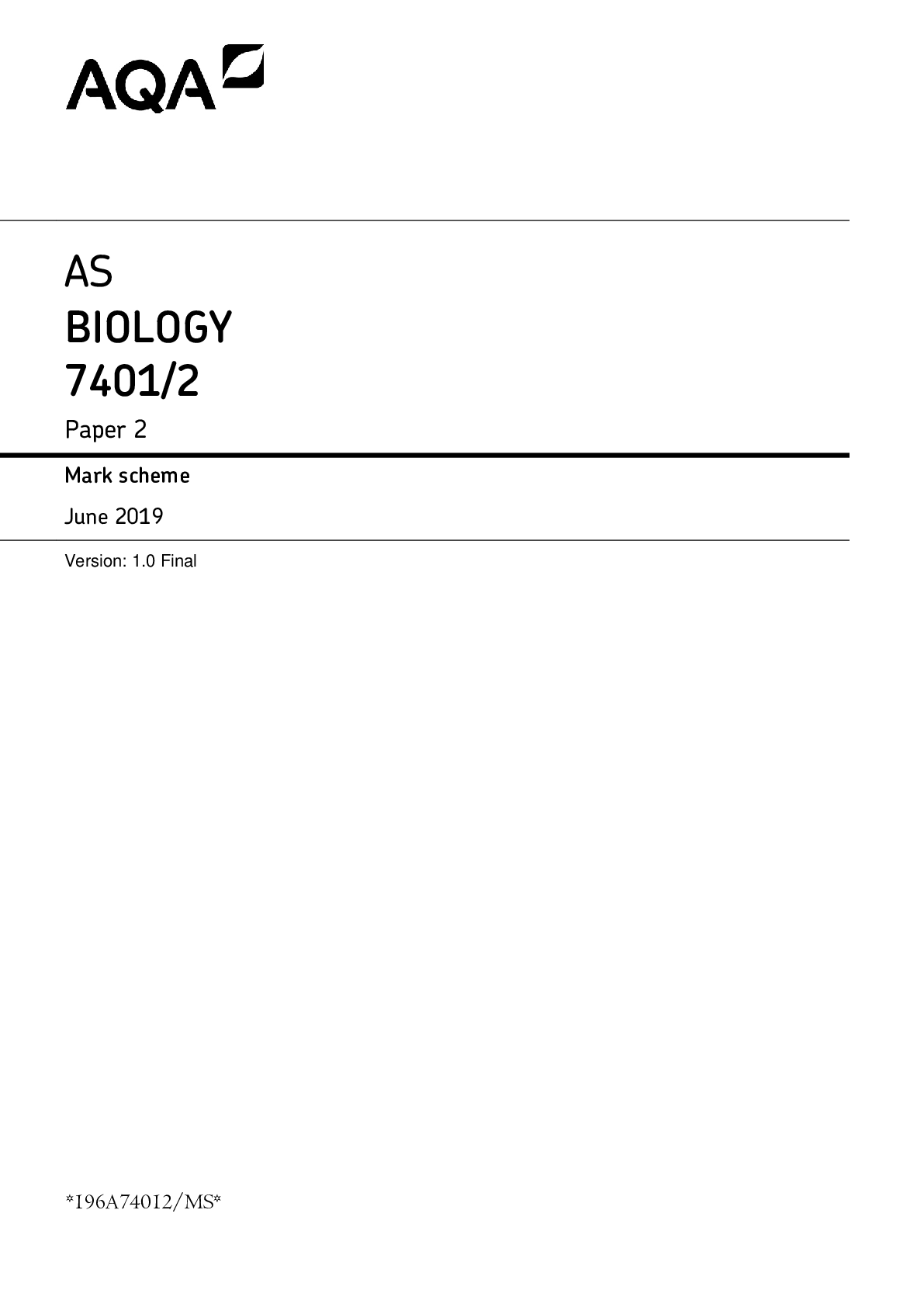

.png)
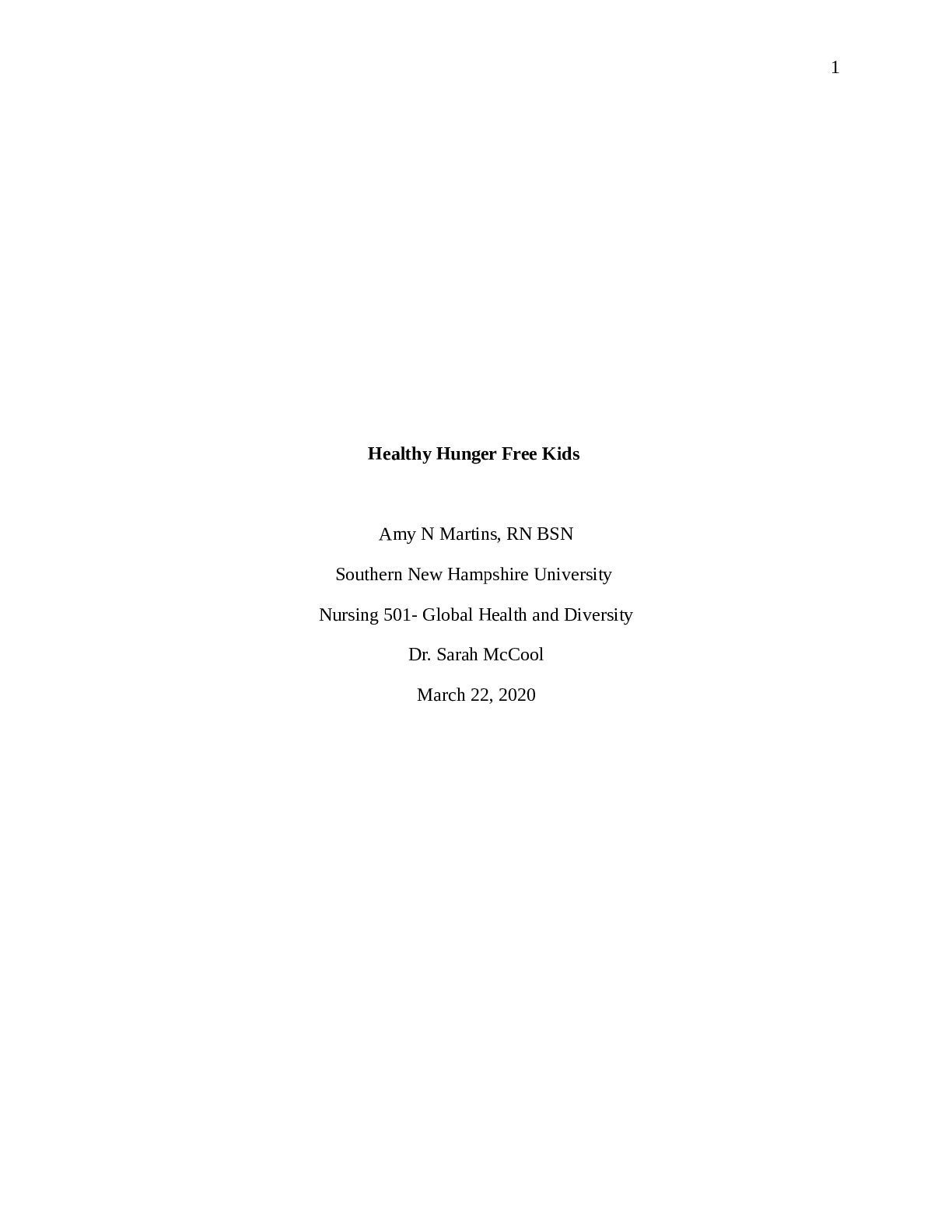
.png)
.png)
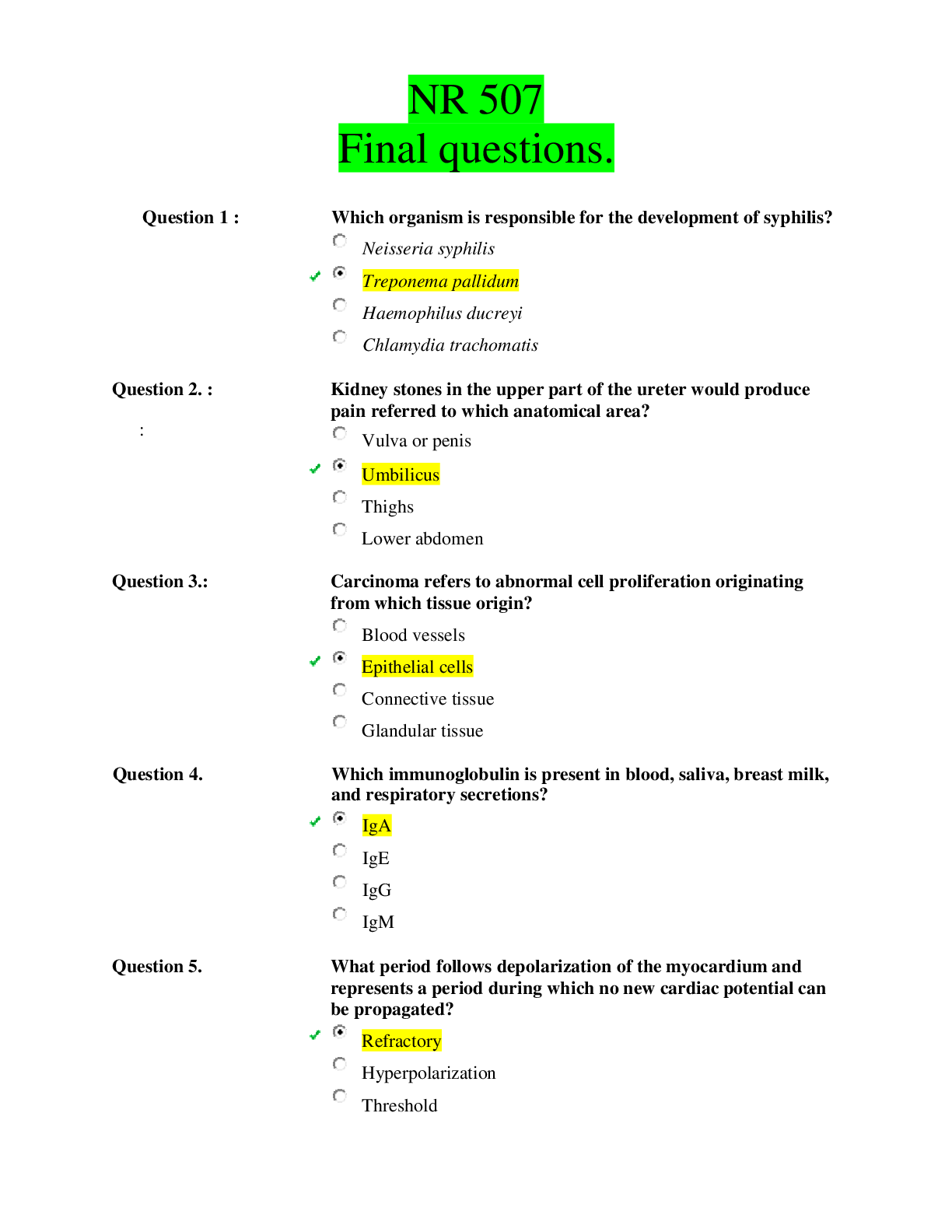
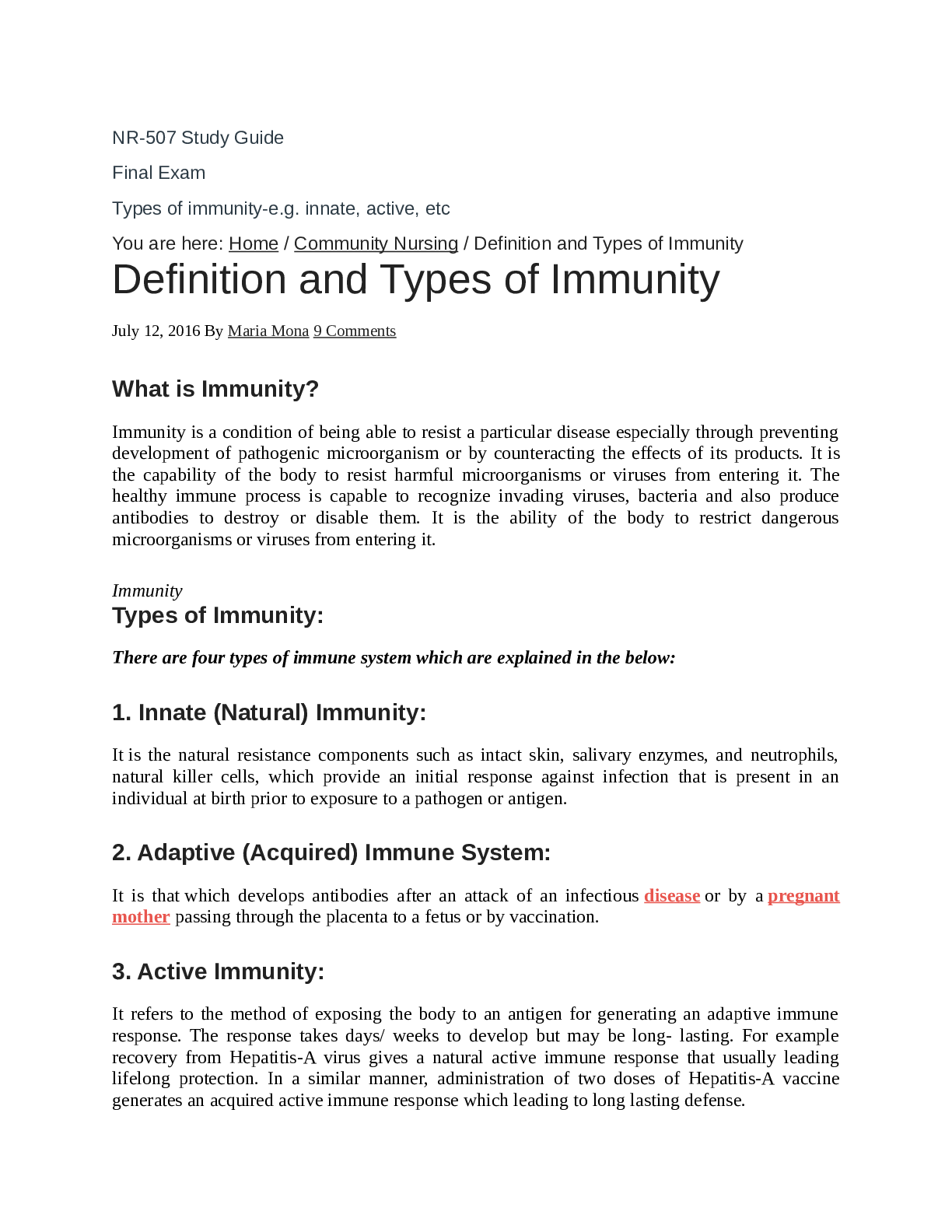

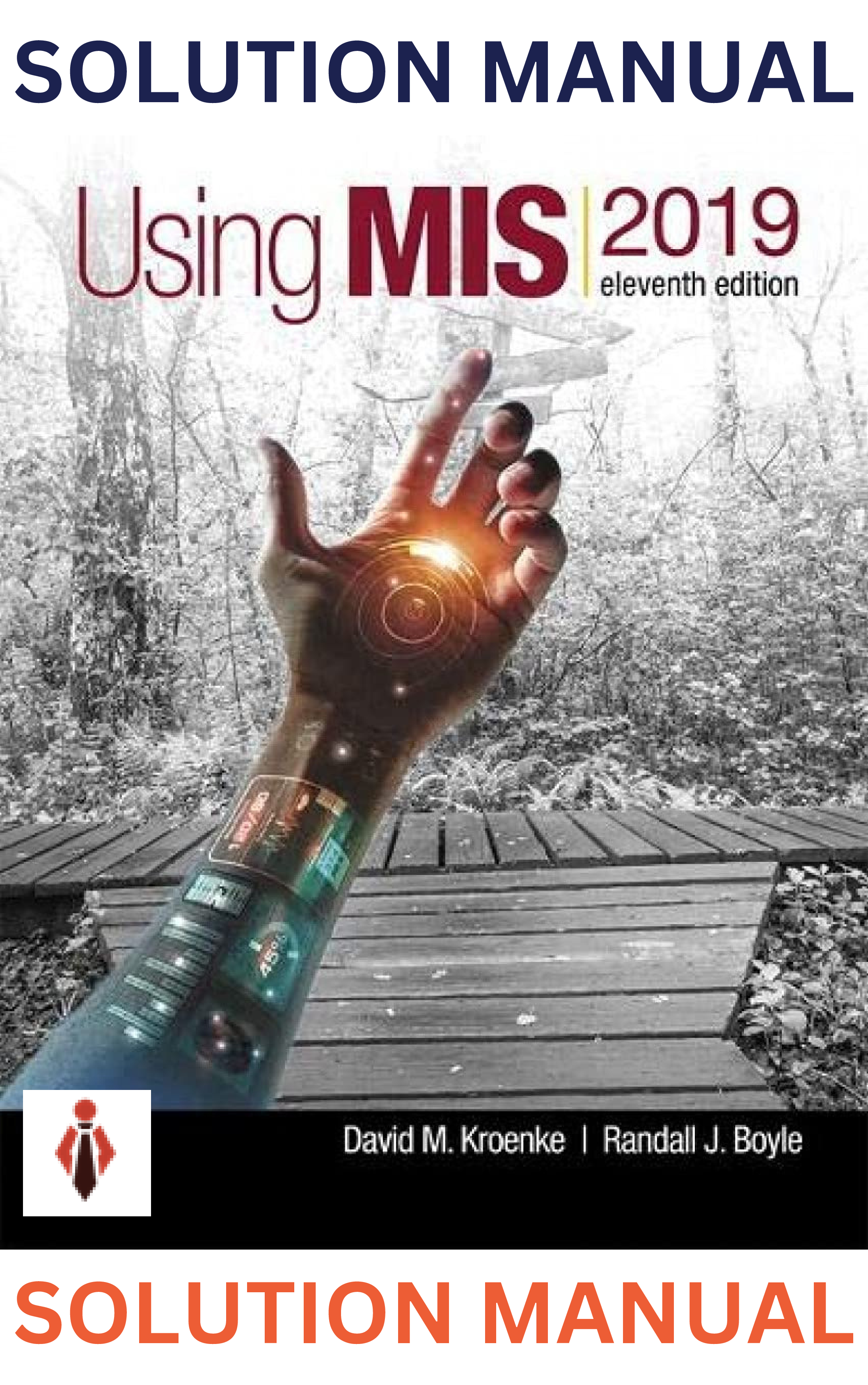

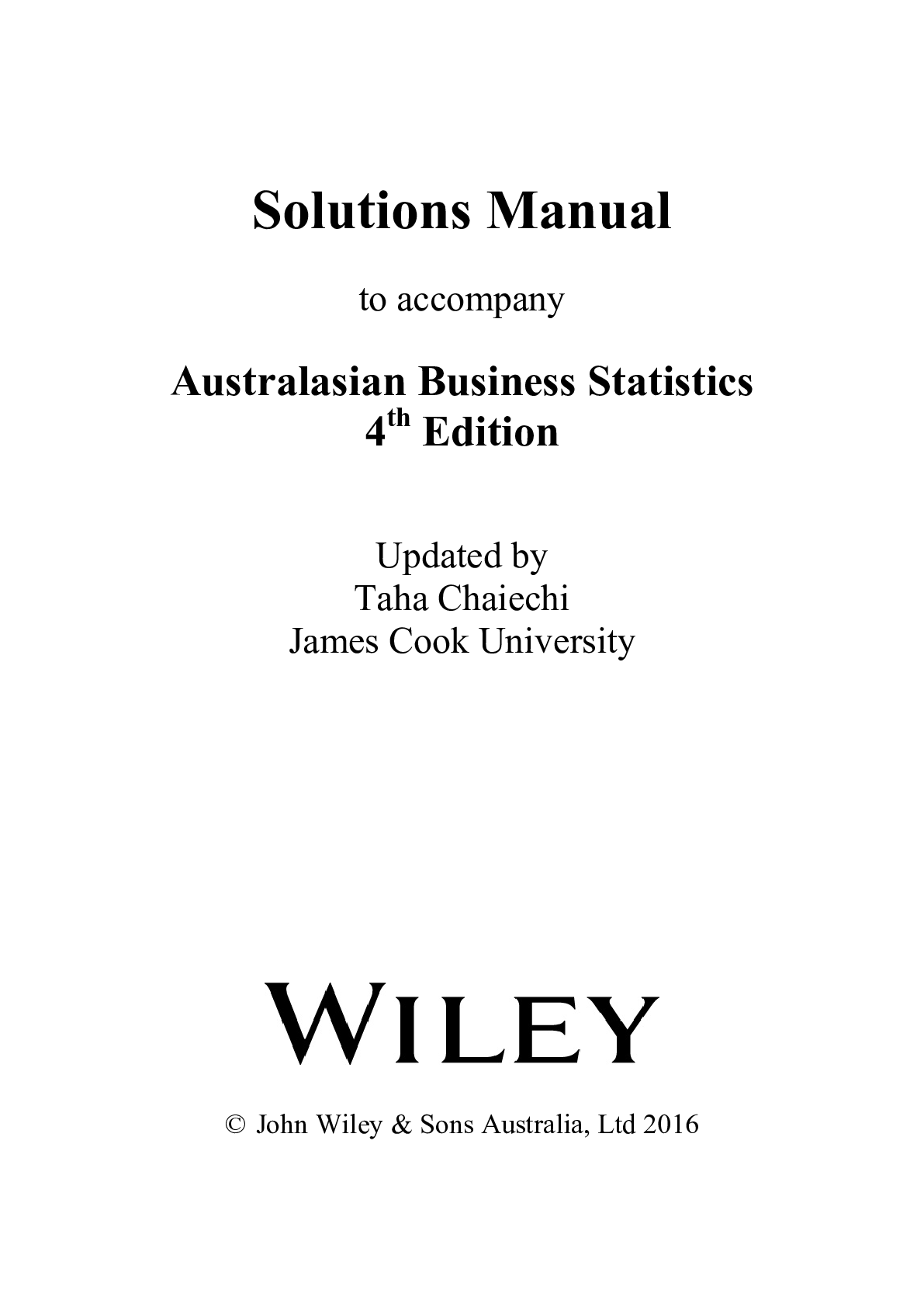

.png)
